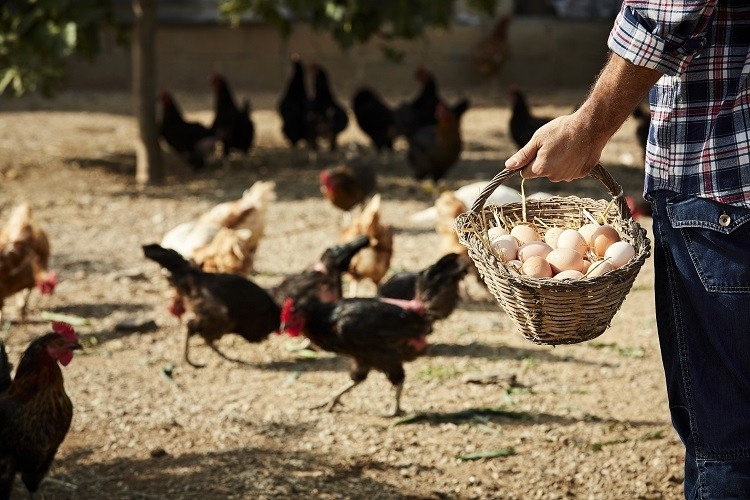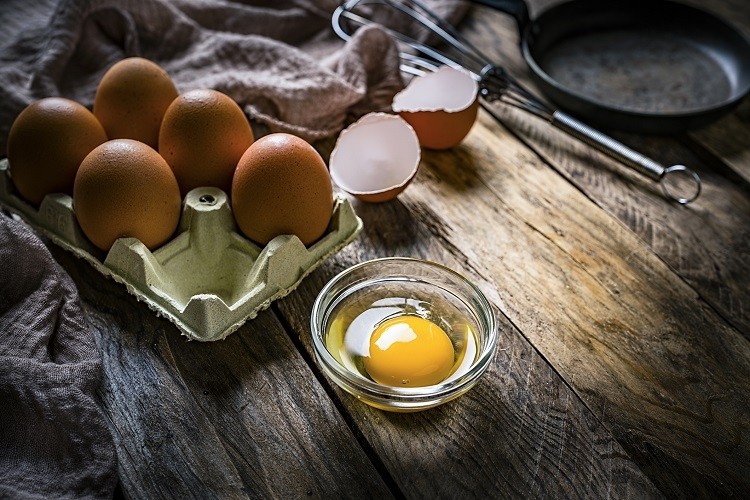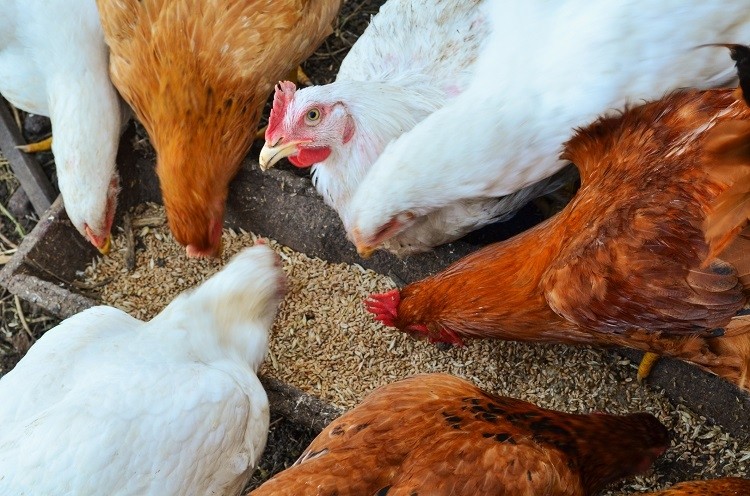How did PFAS contaminate the organic egg supply chain? Feed suppliers weigh in

In Denmark, per- and polyfluoroalkyl substances (PFAS) were recently identified in organic eggs. The DTU Food Institute believes the so-called forever chemical contamination can be attributed to the fishmeal consumed by the egg-laying hens.
Trade association European Fishmeal and Fish Oil Producers (EFFOP) has responded, stressing its members are taking the issue ‘very seriously’. The group is moving quickly to address the ‘paucity’ of knowledge in its current scientific understanding of the distribution of PFAS in the value chain, we were told.
Recap: ‘forever chemicals’ found in eggs
PFAS are known as ‘forever chemicals’ because they don’t degrade in the environment. While ingestion of PFAS is not expected to make one acutely ill, health risks increase if significant quantities are consumed over an extended period.
In a recent study conducted by researchers at the DTU National Food Institute in Denmark, PFAS was identified in organic egg yolks. Lower levels were found in eggs from free-range, barn and battery hens.
PFAS are thought to bind to the protein in the yolk. When consumed by humans, it can take three to seven years before the substance concentration is halved.
This is of particular concern in children who eat a lot of organic eggs per week, suggested DTU. The tolerable weekly intake of the sum of four specific PFAS is set at 4.4 nanograms per kilogram of body weight, according to the European Food Safety Authority (EFSA). If a child eats five to six organic eggs per week, the intake could be as high as 10 nanograms per kilogram of body weight were week.
“When children area at risk of being exposed to more than twice as much PFAS solely from eggs as the amount that is the limit for a safe intake, the risk is noticeable,” commented DTU associate professor Kit Granby.
Chicken feed contamination
If the PFAS identified in the organic egg yolks came from feed given to the hens, then a big question remains: how did the feed become contaminated with ‘forever chemicals’?
According to EFFOP, environmental contamination is a possibility in fishmeal, which can be an ingredient used in hen feed. “Fishmeal, being a natural resource sourced from across the world, can sometimes be exposed to contaminants of various types that might be in the soil, water or air,” explained marine biologist Dr James Hinchcliff from Marine Ingredients Denmark and EFFOP.
Human activity is the ‘main’ source of this contamination, which tends to end up in the sea, he told FoodNavigator. “We believe the chemicals are discharged into the sea from industrial production.”
Indeed, chemical majors have been accused of discharging PFAS into the environment, explained Dr Hinchcliff, who raised concerns about the presence of PFAS in saltwater because of such pollution.

EFFOP lamented that the original investigation by DTU did not contain traceable origins in relation to the fishmeal used in the feed mixes for chickens. Research suggests that fishmeal is ‘highly variable’ in nature due to seasonality, species, site of catch and production method, and as such, ‘should not be representative of a whole industry’, noted EFFOP.
How are fishmeal suppliers addressing the problem?
In Denmark, feed producers for egg-laying hens have already announced they will immediately stop using fishmeal in feed for egg-laying hens.
Blacklisting fishmeal, however, is not the solution, suggested EFFOP. “Fishmeal and fish oil are one of the most important animal feed ingredients on the planet and its removal is likely to cause socio-economic challenges for the food sector as well as health and welfare problems for livestock due to sub-optimal nutrition provided from alternative sources.”

The pressure is on, therefore, for fishmeal suppliers to clean up their supply chains. EFFOP has already initiated analyses to get a ‘complete picture’ of all the fish species that are used to produce fishmeal in Europe. A database will then be established to map the PFA profile of feeds, explained the trade body.
Since autumn last year, preliminary analyses of Danish fishmeal have seen ‘no cause for concern’, with the values reflecting the current values in EU regulation which came into force January this year (whole fish on wet basis 8 μg /kg body weight).
“There are no values set for feed ingredients and the fact that fishmeal is a dry powder with little moisture should not be taken for granted when performing these comparisons, since dry powders contain little water and therefore are more concentrated,” noted EFFOP.
Are organic eggs the only foods impacted?
The vast majority (around 87%) of global fishmeal production is used as a protein source in aquafeeds. Indeed, protein and fat from fishmeal and oil contribute significantly to modern aquafeeds, and can be as high as 25% for Atlantic salmon, Dr Hinchcliff explained.
Recent studies conducted in Norway and the Netherlands suggest that farmed fish have very low levels of PFA contamination, if any.
Such findings might suggest that when used as an aquafeed, there is ‘minimal transfer’ of PFAS compared to organic egg production. As a result, the trade association believes the problem may be specific to eggs. “More research is needed,” added Dr Hinchcliff.












